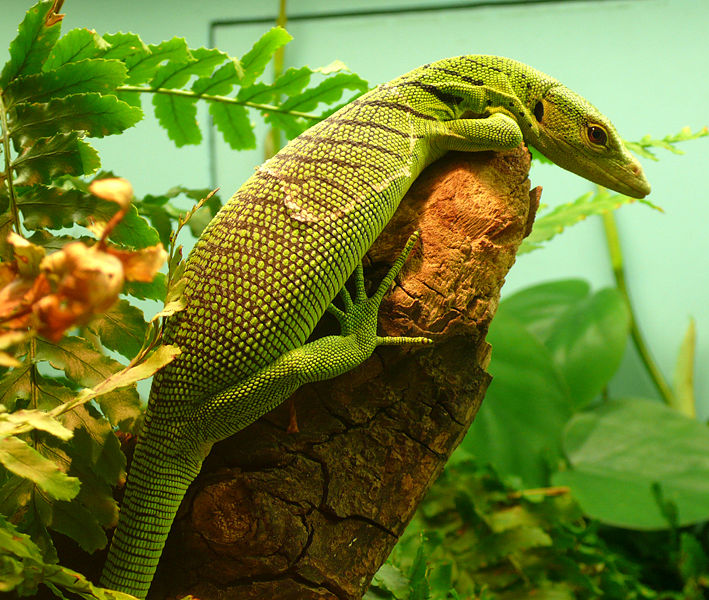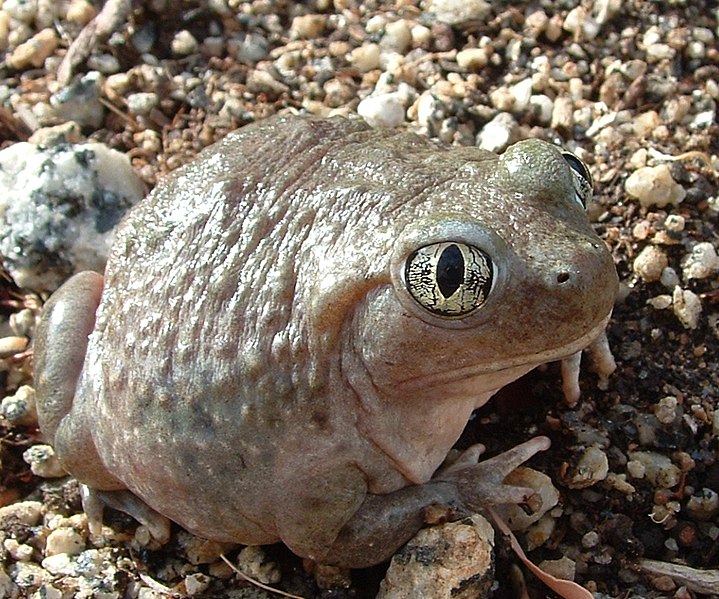The Leopard Tortoise Stigmochelys (formerly Geochelone) pardalis, stands out in both attractiveness and personality among a group of reptiles well known for possessing both attributes. Although among the most responsive of reptile pets, their very specific husbandry needs must be met if they are to thrive. An understanding of the Leopard Tortoise’s natural habitat and habits is very useful in helping to keep and breed them in captivity (please see Part II). Read More »
Monthly Archives: April 2010
Leopard Gecko Health – First Diagnosis and Treatment of Hyperthyroidism
Reptile medicine is advancing admirably, but even experienced veterinarians are sometimes baffled by conditions that show generalized symptoms – lack of appetite, loose stool, lethargy, etc. Recently, an interesting case involving a Leopard Gecko (Eublepharis macularius) has opened up a promising new window into reptile health care. Read More »
Discovery of a Huge, Arboreal, Fruit-Eating Monitor Shocks Herpetologists

It’s well-known that the world still hides countless “undiscovered” animals and plants – even Central Park in NYC recently yielded a previously unknown centipede. However, it is still something of a surprise when large, colorful creatures remain unseen into modern times. Such is the case for the Northern Sierra Madre Forest Monitor (Varanus bitatawa), a spectacularly colored, 6-foot-long lizard that has been designated as a new species in the current (April, 2010) issue of the journal Biology Letters. Read More »
Choosing the Ideal Substrate for Reptiles, Amphibians and Invertebrates – Part 1
 Bark, moss, sand, coconut husk, wood chips …selecting the proper substrate for one’s pets can be a difficult task these days (in contrast to years ago, when we were limited to newspapers, earth or gravel!). Please check out our extensive line of Reptile and Amphibian Substrates to see examples of what is available.
Bark, moss, sand, coconut husk, wood chips …selecting the proper substrate for one’s pets can be a difficult task these days (in contrast to years ago, when we were limited to newspapers, earth or gravel!). Please check out our extensive line of Reptile and Amphibian Substrates to see examples of what is available.
Factors to Consider
A number of factors – some obvious, some not – must be taken into consideration when deciding upon a substrate. Some of the most important are as follows: Read More »
Spiny-Tailed Agamids – the Fascinating Lizards of the Genus Uromastyx – Part 1
Known also as Dabb Lizards or Mastigures, Spiny-Tailed Agamids are among the most sought after of all lizard species being kept today. There is certainly much to recommend them, but their care does present some challenges. Today I’d like to introduce the group; in Part II of this article I’ll mention a few points should be considered before adding these unique creatures to your collection. Read More »
 That Reptile Blog – Reptile, Amphibian and Exotic Pet Care and Information
That Reptile Blog – Reptile, Amphibian and Exotic Pet Care and Information
